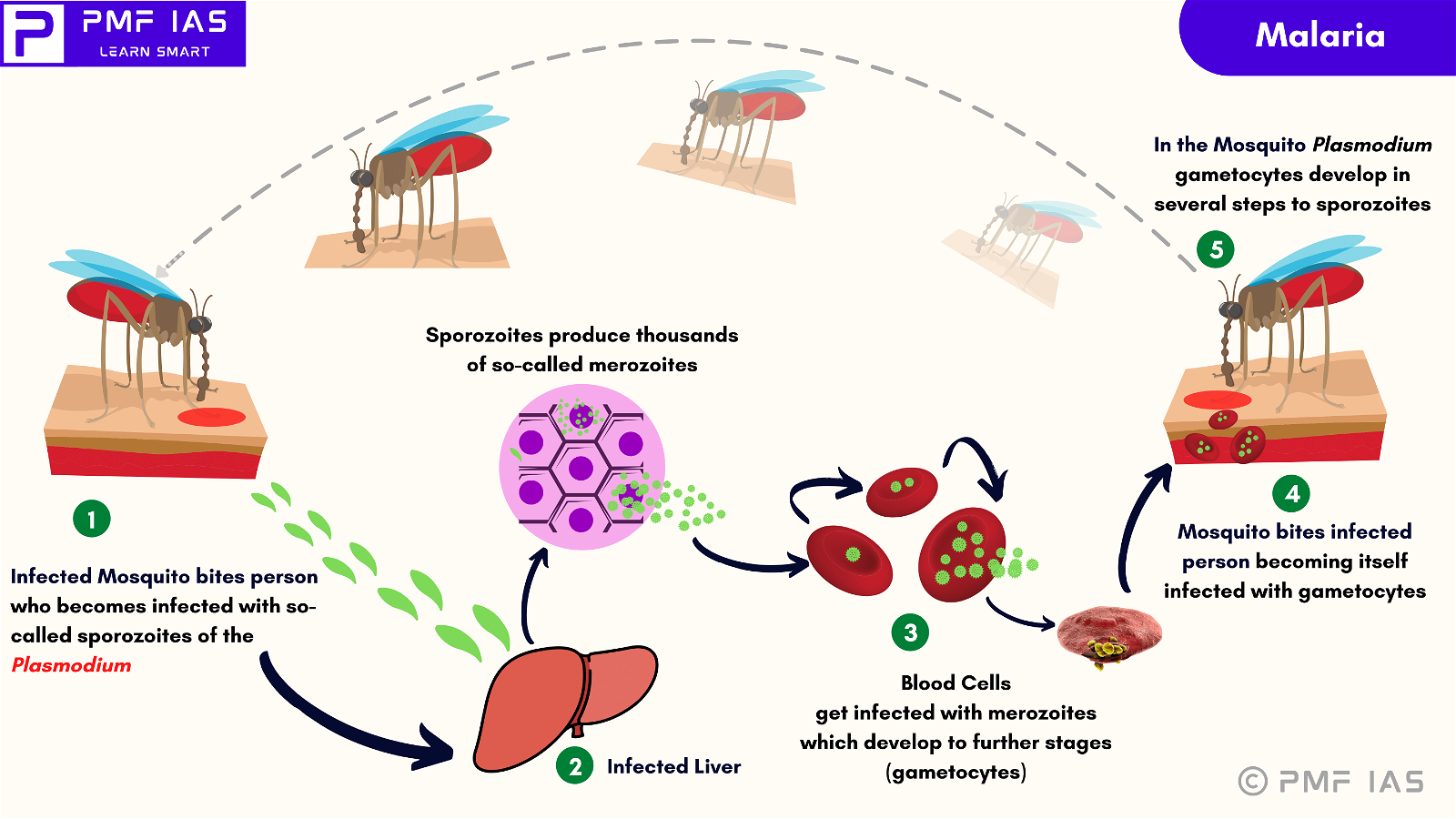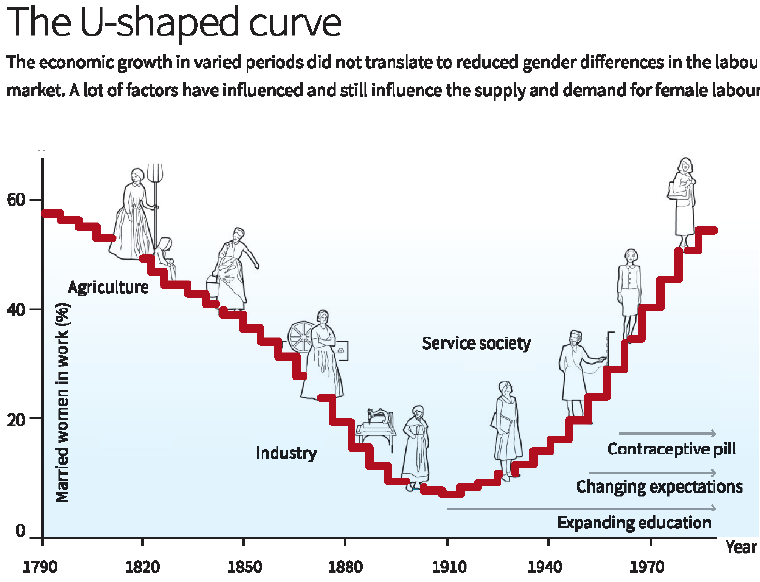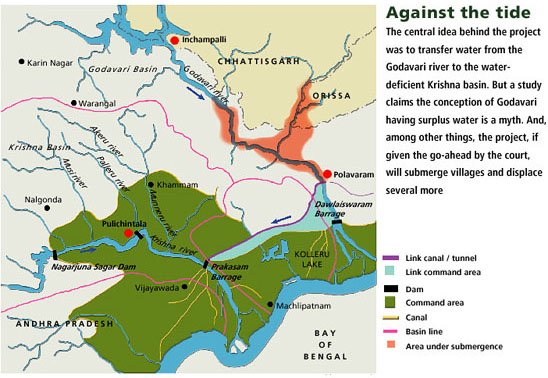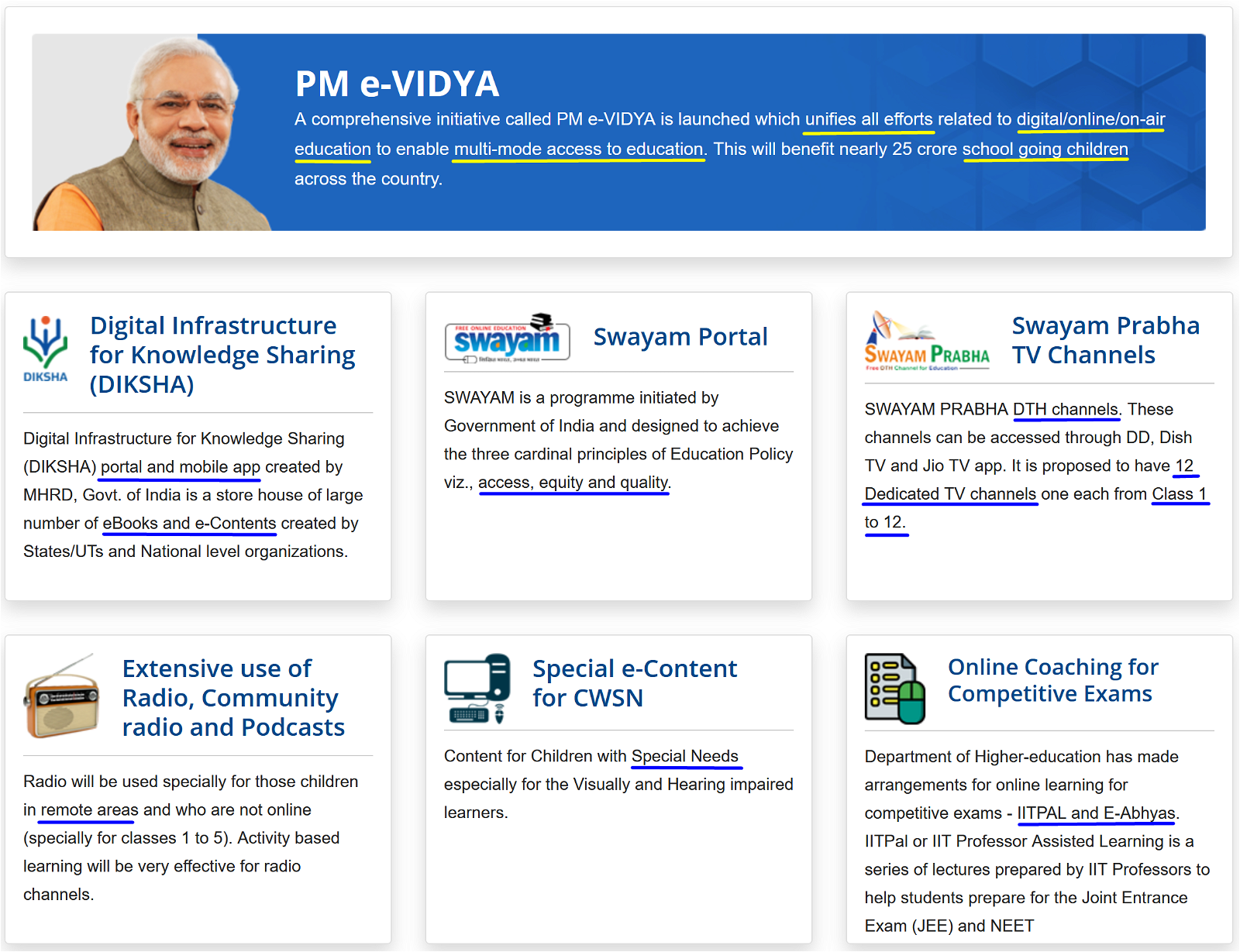
Current Affairs February 15, 2024: Internet Blockage in Punjab, Functioning of 17th Lok Sabha, Sanjay Agrawal Committee, State of the World’s Migratory Species Report, World Government Summit 2024, Manufacturing vs Service led Growth, Dhokra Shilpkala
Subscribers of "Current Affairs" course can Download Daily Current Affairs in PDF/DOC
Subscribe to Never Miss an Important Update! Assured Discounts on New Products!
Must Join PMF IAS Telegram Channel & PMF IAS History Telegram Channel
{GS2 – Governance – Issues} Internet Blockage in Punjab
- Context (TH): The Centre used the British-era Act to block the Internet in Punjab ahead of the farmers’ march.
Temporary Suspension of Telecom Services (Public Emergency or Public Safety) Rules, 2017
- The Rules are issued under the Indian Telegraph Act, 1885.
- No government department, except the Ministry of Home Affairs or a state’s home affairs department can issue these orders.
- In unavoidable circumstances, where obtaining prior direction is not feasible, such order may be issued by an officer, not below the rank of a Joint Secretary to the GoI, who has been duly authorised by the Union Home Secretary or the State Home Secretary.
- Such an order to suspend telecom service shall then have to be confirmed by a competent authority within 24 hours of it being issued.
- Any order issued by the competent authority shall contain reasons for such direction and a copy of such order shall be forwarded to the concerned Review Committee by next working day.
- The Central or the State Government, shall constitute a Review Committee to be headed by the Cabinet Secretary/Chief Secretary (in the state) within the next five days to assess its compliance with Section 5(2) of The Telegraph Act.
What laws governed this area before the 2017 Rules were notified?
- Before 2017, Internet shutdowns were ordered under Section 144 of the Code of Criminal Procedure, which gives District Magistrates the powers to prevent unlawful gatherings and direct any person to abstain from a certain activity.
- Section 69(A) of the IT (Amendment) Act, 2008 gives the government powers to block particular websites, not the Internet as a whole.
{GS2 – Polity – IC – Parliament} Functioning of 17th Lok Sabha
- Context (TH): PRS Legislative Research released vital stats on the functioning of 17th Lok Sabha.
- The 17th Lok Sabha held its sessions between June 2019 and February 2024.
Findings of the Report
- Lok Sabha functioned for 88% of its scheduled time, while Rajya Sabha worked for 73%.
- The 17th Lok Sabha held 274 sittings. Only four previous Lok Sabhas have had fewer sittings, all of which were dissolved before completing the five-year term.

- This is the first time Lok Sabha did not elect the Deputy Speaker for its entire duration.
- Art 93 of IC requires that Lok Sabha elect a Speaker and a Deputy Speaker ‘as soon as may be’.
- Most Bills introduced during the term of the 17th LS were passed. 58% of the Bills were passed within two weeks of their introduction.
- The J&K Reorganisation Bill, 2019, and the Women’s Reservation Bill, 2023 were passed within two days of introduction.

- 16% of Bills were referred to Committees for detailed scrutiny. This is lower than corresponding figures for the previous three Lok Sabhas.

- 729 Private Members’ Bills (PMBs) were introduced in the 17th Lok Sabha, which is higher than all previous Lok Sabhas, except the 16th. However, only two PMBs were discussed.
- Till date, only 14 PMBs have been passed and received assent. None have been passed in both Houses since 1970.
- Question Hour functioned for 60% of scheduled time in Lok Sabha and 52% in Rajya Sabha.
- Over the years, the time spent on budget discussions in Lok Sabha has reduced. The 17th Lok Sabha discussed the annual budget for 35 hours on average.

{GS3 – Agri – MSP} CRISIL Findings
- Context (TH): Ensuring a Minimum Support Price (MSP) for all crops will enhance farm incomes and boost consumption demand (according to CRISIL Market Intelligence & Analytics).
- CRISIL analysed 16 of 23 crops, which constitute over 90% of field crop production.
Findings of CRISIL
- The real cost to the government is around ₹21,000 crore (MY2023) if the government would only procure crops with mandi prices lower than MSP.
- If the government sells the commodities in mandis, the cost could increase due to the potential further decline in prices.
|
Significance of legalising MSP
- Cash support during times when prices go below MSP.
- Crop Diversification: MSP for all crops can lead to farmers moving to crops other than paddy and wheat.
- Over 60% of field crop production in India comes from only these two crops (excluding sugarcane), as farmers lack risk appetite for other crops.
- Benefit farmers nationwide: MSP-based procurement is currently limited to certain states (Uttar Pradesh, Punjab, Telangana, Madhya Pradesh, Haryana and Chhatisgarh).
{GS3 – Agri – MSP} Sanjay Agrawal Committee
- Context (IE): While announcing the decision to repeal the three farm laws, PM assured that a committee will be constituted to look into various issues of farming.
- Consequently, the Centre constituted a committee headed by former Union Agriculture Secretary Sanjay Agrawal on July 18, 2022.
- The committee’s terms of reference are:
- To promote zero-budget-based farming.
- To change crop patterns, keeping in mind the changing needs of the country.
- To make MSP more effective and transparent. It does not include a legal guarantee for MSP.
- Recommendations to strengthen the Agricultural Marketing System.
- Suggestions on the practicality of giving more autonomy to the Commission for Agricultural Costs and Prices (CACP) and measures to make it more scientific.
- Members of the committee: Representatives of the Central and State governments, farmers, agricultural scientists, and agricultural economists.
- Deadline: The notification did not specify the tenure of the Sanjay Agrawal committee. Therefore, the committee has no deadline by which it is required to present its report.
Zero Budget Natural Farming (ZBNF)
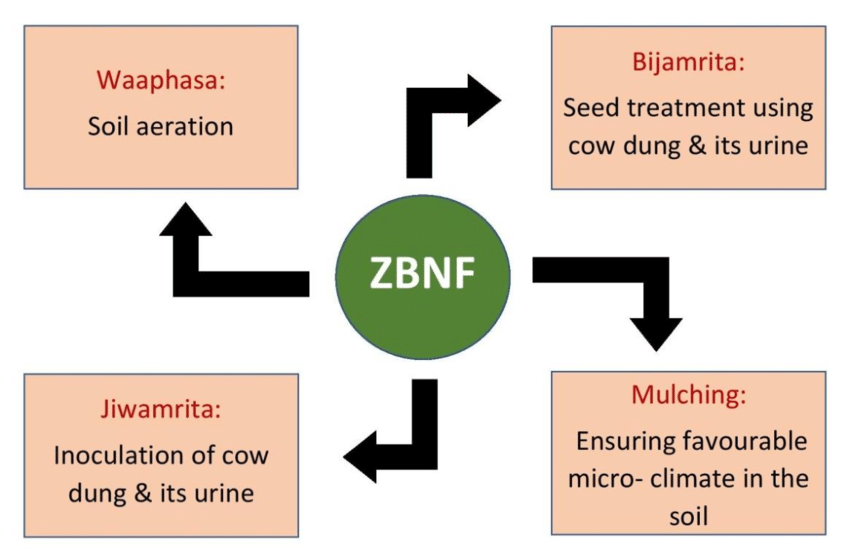 |
To know more on Farmer’s demand & MSP issue, visit >Farmer’s Protest | Minimum Support Price
{GS3 – Envi – Conservation} State of the World’s Migratory Species Report
- Context (IE): The first-ever State of the World’s Migratory Species report was launched by the Convention on the Conservation of Migratory Species of Wild Animals at CMS COP14.
Findings of the Report
- Nearly 44% of migratory species are showing population decline.
- More than one in five (22%) of CMS-listed species are threatened with extinction.
- Nearly all (97%) of CMS-listed fish are threatened with extinction.
- Two greatest threats to both CMS-listed and all migratory species are:
- Overexploitation – includes unsustainable hunting, overfishing and the capture of non-target animals such as in fisheries.
- Habitat loss, degradation and fragmentation – from activities such as agriculture and the expansion of transport and energy infrastructure.
- Other threats: Pollution (light and noise pollution), climate change and invasive species.
- Globally, 399 migratory species that are threatened or near threatened with extinction are not currently listed under CMS.
- Half (51%) of Key Biodiversity Areas identified as important for CMS-listed migratory animals do not have protected status.
- 58% of the monitored sites recognized as being important for CMS-listed species are experiencing unsustainable levels of human-caused pressure.
Recommendations
- Strengthen and expand efforts to tackle illegal and unsustainable taking of migratory species.
- Increase actions to identify, protect, connect and effectively manage important sites for migratory species.
- Address species in most danger of extinction, including nearly all CMS-listed fish species.
- Scale up efforts to tackle climate change, as well as light, noise, chemical and plastic pollution.
- Expanding CMS listings to include more at-risk migratory species in need of national and international attention.
{GS3 – Envi – Pollution} Sterlite Copper Smelting Plant Lockdown
- Context (IE): The Vedanta has moved the court against the closure of the Sterlite copper smelting plant in Thoothukudi.
- Background
- The Tamil Nadu government ordered the permanent closure of the copper smelting plant six years ago due to pollution concerns.
- The plant’s closure in 2018 followed nearly three decades of local protests, including an incident of police firing.
- The plant ended up in Tamil Nadu after facing rejections from Gujarat, Maharashtra, and Goa in the 1990s.
- Company’s argument
- National importance: The plant produces 1200 tons of copper daily, with 50% used domestically.
- Compliance with laws: Operating in the red category, it faced the highest scrutiny for compliance with environmental norms.
- The Supreme Court’s balanced view
- In Public interest
- It suggested creating an expert committee to address environmental concerns and considering reopening the Sterlite copper smelting plant, citing national interest.
- However, If the committee suggests reopening, the plant cannot resume operations with the same standards as in 2018.
- A domain expert’s perspective on upgrading the plant to a state-of-the-art facility should be sought and followed, even if it requires an initial investment of ₹100 crore.
- In National interest
- SC ordered to ensure protection and reparation if the committee doesn’t find a reason to shut down the industry. Because this industry generates revenue for the nation and the State and it should not lose this asset
- In Public interest
Copper in India
|
{GS3 – IE – Industry} Manufacturing vs Service led Growth
- Context (TH): Raghuram Rajan and Rohit Lamba suggest focusing on high-skill, services-driven growth instead of relying on manufacturing-led growth (Book – Breaking the Mould: Reimagining India’s Economic Future).
- They suggested this because, in 75 years, India has not been able to industrialise sufficiently. Its manufacturing share in output and employment has always been stagnant and below 20%
- This article discusses why such strategy will be wrong and need for india to focus on manufacturing-led growth.
Disadvantages of Services-led growth
- Firstly, it struggles to absorb the labor exiting agriculture, unlike manufacturing.
- Secondly, the service sector demands a large, highly skilled workforce, creating inequality as it favors workers with college degrees.
- Inequality from services-driven growth is higher than the manufacturing-led growth. The Gini index of inequality for regular wages in the services sector was 44 compared to 35 for manufacturing (PLFS, 2021-22).
- Thirdly, the emphasis on high-skill services benefits the traditional elite more than many first-generation graduates from rural colleges and small towns.
- Finally, the service sector led growth benefits a small minority, whereas manufacturing led growth sector can promise all round economic development.
Why is Industrialisation stagnant in India?
- Neglect of mass school education due to early investments in higher education in India. Innovation and efficiency thrive on mass education.
- For instance, Rural entrepreneurship was able to grow out of the traditional agricultural sector on a massive scale in China due to widespread mass education.
- Foreign direct investment in India, intended to spread technology, was limited to specific areas.
- India has traditionally devalued certain occupations hindering organic innovation in manufacturing. Artisanal knowledge lacks social respect.
- India doesn’t adequately appreciate the vocational skills essential for manufacturing, even if they command higher wages (Industrialists concern).
{Prelims – Envi – Species} Horseshoe Crabs
- Context (TH): Environmental groups have recently petitioned the U.S. government to grant endangered species protection for the American horseshoe crab.
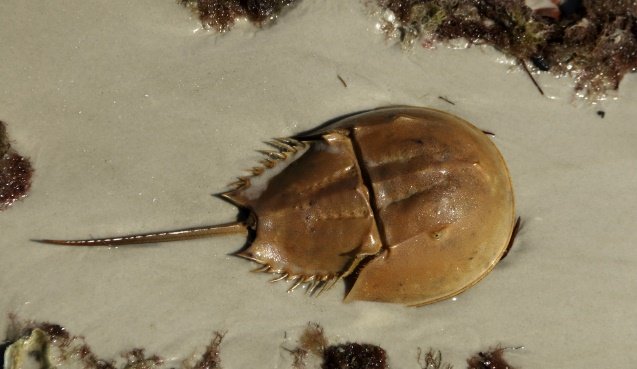
- Horseshoe crabs are marine chelicerate arthropods found in shallow coastal waters on soft, sandy, or muddy bottoms.
- They belong to the Subphylum Chelicerata, which includes animals like spiders, scorpions, harvestmen, mites, and ticks.
- Horseshoe crabs are marine arthropods, not true crabs, but are chelicerates, closely related to arachnids like spiders, ticks, and scorpions.
- Their segmented body, segmented limbs, and thick chitinous cuticle (exoskeleton) are typical features of arthropods.
- They predominantly spawn (release eggs) on intertidal beaches during summer-spring high tides.
- Horseshoe crabs are often regarded as “living fossils” due to their ancient lineage.
- Lifespan: 20 – 100 years.
- Conservation Status: IUCN Status: American horseshoe crab: Vulnerable, Tri-spine horseshoe crab: Endangered | WPA, 1972: Schedule IV
- Threats: Commercial harvest for biomedical use, habitat loss.
- The IUCN decided to observe the International Horseshoe Crab Day on 20th June.
Species and Distribution
- American horseshoe crab (Limulus polyphemus): Found along the eastern coast of the USA and in the Gulf of Mexico.
- Tri-spine horseshoe crab (Tachypleus tridentatus).
- Coastal horseshoe crab (Tachypleus gigas).
- Mangrove horseshoe crab (Carcinoscorpius rotundicauda)
- Odisha is their largest habitat in India.
{Prelims – In News} Dhokra Shilpkala
- Context (ET): Chhattisgarh’s Ocher Studio is helping to preserve Dhokra Shilpkala Art.

- The origins of Dhokra Shilpkala can be traced back to the tribal communities residing in the regions of Chhattisgarh, Jharkhand, West Bengal, and Odisha.
- The word “Dhokra” is believed to be derived from the Dhokra Damar tribes, who are the traditional metal smiths of Central India.
- It involves an intricate process of metal casting, using the lost-wax technique (cire perdue).
- Themes: Artisans draw inspiration from nature, mythology, and everyday life, incorporating motifs such as animals, birds, deities, and tribal symbols into their creations.
- Size: It encompasses a wide range of artistic expressions from miniature figurines and jewelry to larger-than-life sculptures and functional objects.
{Prelims – In News} World Government Summit 2024
- Context (PIB): PM participated in the World Governments Summit in Dubai as a Guest of Honour.
- World Government Summit is an annual event held in Dubai, United Arab Emirates.
- It was established in 2013 under the leadership of Vice President and Prime Minister of the UAE.
- Theme of 2024: “Shaping the Future Governments”.
- It serves as a platform where leaders in government come together for a global dialogue on governmental processes and policies.
- The summit focuses on various critical topics, including futurism, technology innovation, and other relevant issues.
{Prelims – Sci – Bio – Diseases} Bubonic Plague (Black Death)
- Context (DTE): A rare case of bubonic plague confirmed in Oregon residents, likely transmitted by a pet cat carrying Yersinia pestis bacterium from rodents and fleas.
- The bubonic plague is caused by the bacterium Yersinia pestis found in rodents and fleas.
- It gets its name from the swollen lymph nodes (buboes) caused by the disease.
- Transmission: Mainly by bite of infected fleas, direct contact with infected tissues, and inhalation of infected respiratory droplets.
- It appears in three forms:
- Bubonic plague: Causes painful lymph nodes, fever, headache, chills, and weakness. Over 80% of cases in the US are of this form.
- Septicemic plague: Develops from untreated bubonic plague and may lead to bleeding into the skin and other organs.
- Pneumonic plague: The most fatal form, spread between people through infectious droplets. It can cause respiratory failure and shock.
- Symptoms: Sudden high fever and chills, Pains in abdomen, arms and legs, Headaches, swollen lumps in the lymph nodes (buboes) that develop and leak pus.
- Treatment: Can be cured with antibiotics.
Oregon
|




![PMF IAS Environment for UPSC 2022-23 [paperback] PMF IAS [Nov 30, 2021]…](https://pmfias.b-cdn.net/wp-content/uploads/2024/04/pmfiasenvironmentforupsc2022-23paperbackpmfiasnov302021.jpg)






